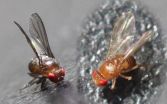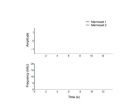(Press-News.org) MADISON, Wis. -- The crucial genetic mashup that spawned the yeast that brews the vast majority of beer occurred at least twice -- and both times without human help -- according to a University of Wisconsin-Madison study published Aug. 11 in the journal Molecular Biology and Evolution.
Lager yeast, a hybrid that thrives in cold temperatures, is used in lager beer production, which accounts for about 94 percent of the world's beer.
And while 15th century Bavarian monks invented lager beer, they probably did not deliberately cause the hybridizations detailed by a team led by Chris Hittinger, an assistant professor of genetics and yeast expert at the UW.
The invention of lager beer happened centuries before Louis Pasteur proved that fermentation is caused by microbes in the mid-1800s, so it's hard to imagine monks who knew nothing about microbiology deliberately crossing the two species that created lager yeast.
One of the founder species, Saccharomyces cerevisiae, has been used for millennia to brew ale, which ferments at about 30 degrees Celsius. The other, S. eubayanus, was discovered by Hittinger and others in Patagonia, South America, in 2011.
When these two species mixed about 500 years ago -- at a place yet unknown -- the result was a yeast that could devour the particular sugars in malt at the much lower temperature (14-16 C) found in the cellars and caves used for fermentation in Europe.
Each hybridization formed one of the major lager strains. Those yeasts were so efficient that they already dominated brewing at the start of the 20th century, when scientists first isolated and preserved the industrial yeast strains. German emigrants carried lager yeast across much of the world, where the microbes transform sugar into alcohol in a global industry worth an estimated $250 billion.
To explore the evolutionary origin of lager yeast, Hittinger, doctoral candidate EmilyClare Baker and former student Bing Wing used advanced genome sequencing and informatics techniques to trace the two major strains of lager yeast to a combination of two pre-existing yeasts: S. cerevisiae and S. eubayanus.
S. cerevisiae is used in baking bread, brewing ale and fermenting wine. The much rarer, cold-loving S. eubayanus has now been discovered in Asia and both Americas, including Wisconsin. S. eubayanus has yet to be detected in Europe.
One of the more intriguing results from the study concerns the changes that followed the two hybridization events. "In both cases, you have a repeated evolutionary trajectory," Hittinger says. "The controls that put the brakes on genetic change relaxed by 60 percent in both lineages after hybridization." Among yeast living in European breweries, "we see the same burst of evolution in both lineages."
Even though early brewers knew nothing about microbes, some of their traditions and procedures unwittingly promoted the survival of their single-celled assistants. "There were all kind of rituals to ensure inoculation of the wort (the mix of malt, hops and water), prior to understanding that there actually was an organism causing fermentation," Hittinger says. "There are stories of brewers using a particular stir stick, or using the same barrels. Some brewers would deliberately put beer from a previous batch into the fresh wort."
The accidental hybridization of yeast has parallels in the deliberate breeding used to improve plants and animals in agriculture. For one thing, the selection pressures can backfire. "You are making a bottleneck," says Hittinger, "reducing the number of individuals, and with the yeasts, the potential is even worse. Their population likely dropped to a single cell that multiplied to make the yeast used to brew most of our beer."
The rare, chance crossing of two distantly related species, which changed the economics and taste of beer, was based on the acquisition of "a radically different set of genes," Hittinger says. "A lot of people assume yeasts are pretty similar to one another, but this is about the same level of genetic difference as you'd find between a human and a bird. These are very different organisms, and that's why you get such a striking shift in temperature with such striking results for the beer industry."
INFORMATION:
David Tenenbaum, 608-265-8549, djtenenb@wisc.edu
LOS ALAMOS, N.M., August 13, 2015--A team of researchers has discovered a Jupiter-like planet within a young system that could provide a new understanding of how planets formed around our sun.
The new planet, called 51 Eridani b, is the first exoplanet discovered by the Gemini Planet Imager (GPI), a new instrument operated by an international collaboration headed by Bruce Macintosh, a professor of physics in the Kavli Institute at Stanford University. It is a million times fainter than its star and shows the strongest methane signature ever detected on an alien planet, ...
WASHINGTON - Violent video game play is linked to increased aggression in players but insufficient evidence exists about whether the link extends to criminal violence or delinquency, according to a new American Psychological Association task force report.
"The research demonstrates a consistent relation between violent video game use and increases in aggressive behavior, aggressive cognitions and aggressive affect, and decreases in prosocial behavior, empathy and sensitivity to aggression," says the report of the APA Task Force on Violent Media. The task force's review ...
Recent Massachusetts General Hospital (MGH) investigations into the neurobiology underlying the effects of general anesthesia have begun to reveal the ways different anesthetic agents alter specific aspects of the brain's electrical signals, reflected by EEG (electroencephalogram) signatures. While those studies have provided information that may lead to improved techniques for monitoring the consciousness of patients receiving general anesthesia, until now they have been conducted in relatively young adult patients. Now a series of papers from MGH researchers is detailing ...
You've heard that romance starts in the kitchen and not in the bedroom. Well, researchers at Drexel University finally have the science to support that saying - but not the way you might think.
In a new study published online in the journal Appetite, researchers found that women's brains respond more to romantic cues on a full stomach than an empty one. The study explored brain circuitry in hungry versus satiated states among women who were past-dieters and those who had never dieted.
The study's first author Alice Ely, PhD, completed the research while pursuing a ...
For the first time, Lawrence Livermore scientists as part of an international team, have discovered the most Jupiter-like planet ever seen in a young star system, lending clues to understanding how planets formed around our sun.
Using a new advanced adaptive optics (AO) device on the Gemini Planet Imager (GPI) on the Gemini South Telescope in Chile, the team took an image of the planet, which is about twice the size of Jupiter.
Called 51 Eridani b, the planet is the first in a wave of discoveries by a new generation of planet-hunting instruments, and could help scientists ...
Scientists at The Field Museum have identified a new species of pre-mammal in what is now Zambia. Thanks to a unique groove on the animal's upper jaw, it was dubbed Ichibengops (Itchy-BEN-gops), which combines the local Bemba word for scar (ichibenga), and the common Greek suffix for face (ops). Put simply: Scarface.
Believed to be roughly the size of a dachshund, Ichibengops lived around 255 million years ago, and was a member of Therocephalia, a group of ancient mammal relatives that survived the largest mass extinction in history (the Permian-Triassic extinction). ...
Scientists have been fascinated by a series of unusual exploding stars -- outcasts beyond the typical cozy confines of their galaxies. A new analysis of 13 supernovae -- including archived data from NASA's Hubble Space Telescope -- is helping astronomers explain how some young stars exploded sooner than expected, hurling them to a lonely place far from their host galaxies.
It's a complicated mystery of double-star systems, merging galaxies, and twin black holes that began in 2000 when the first such supernova was discovered, according to study leader Ryan Foley, University ...
New research from North Carolina State University and Reed College shows that when fruit flies are attacked by parasites or bacteria they respond by producing offspring with greater genetic variability. This extra genetic variability may give the offspring an increased chance of survival when faced with the same pathogens. These findings demonstrate that parents may purposefully alter the genotypes of their offspring.
Fruit flies' reproductive cells are usually haploid, meaning that there is only one copy of each chromosome in the cell's nucleus instead of two. During ...
This news release is available in Japanese.
As nonhuman primates mature, their vocalizations are thought to be minimally or not at all influenced by caregivers - but a new study reveals that infant marmosets use cues from adults as they develop vocalizations. In a surprise twist then, humans may not be the only primates whose vocal development benefits from early communication. To monitor and measure the vocal development in marmosets, Daniel Takahashi et al. recorded vocalizations between the first day of birth and two months of age, using four well-established ...
This news release is available in Japanese.
Amid climate change debates revolving around limited increases in recent global mean surface temperature (GMST) rates, Kevin Trenberth argues that natural climate fluxes - larger than commonly appreciated - can overwhelm background warming, making plateaued rates, or hiatuses, deceiving in significance. After many years of monitoring, it's clear that the GMST can vary from year to year, even decade to decade; these differences, Trenberth argues, are largely a result of internal natural variability. For example, the Pacific ...



